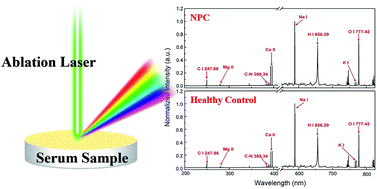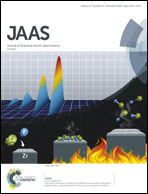Discrimination of nasopharyngeal carcinoma serum using laser-induced breakdown spectroscopy combined with an extreme learning machine and random forest method
Abstract
The early diagnosis of malignant solid tumours remains a challenge. Here, we propose an efficient way to discriminate between nasopharyngeal carcinoma (NPC) serum and healthy control serum by using laser-induced breakdown spectroscopy (LIBS). Serum was dripped onto a boric acid substrate for LIBS spectrum acquisition. The focus elements (Na, K, Zn, Mg, etc.) were selected for diagnosing NPC using LIBS. With the random forest (RF), characteristic spectral lines were selected based on the variable importance. The spectral lines with variable importance greater than the average were selected. The selected spectral lines are the input of the extreme learning machine (ELM) classifier. Using the RF combined with the ELM classifier, the accuracy rate, sensitivity, and specificity of NPC serum and healthy controls reached 98.330%, 99.0222% and 97.751%, respectively. This demonstrates that LIBS combined with a RF-ELM model can be used to identify NPC with a high rate of accuracy.

- This article is part of the themed collection: Atomic spectrometry for the analysis of biological samples


 Please wait while we load your content...
Please wait while we load your content...